Talk Show
October 25 - November 19, 2006 | video projection | Fond. Bevilacqua La Masa, Palazzo Tito, Venezia
Conceived for Dis-orders exhibition project
Curated by Marco Baravalle
Andrea Morucchio's video Talk Show consists of the editing together of footage of a discussion amongst a group of activists and artists which took place within the Municipal Greenhouse of the Giardini of Castello, which had just several hours before been occupied and assigned as the operating and exhibiting base of the “artistic resistance workshop” Mars Pavilion.
The Mars Pavilion was conceived of as an occupation of an abandoned nineteenth century greenhouse - next to the Giardini of the Biennale, coinciding with the opening of the 2005 edition of the International Biennale of Art. The argument, which generated the Talk Show video, was born from the activists’ opposition to the work The Sweetest Dream, by the artist Nemanja Cvijanovic; the work which hung within the greenhouse was a blue European Union flag on which the yellow stars were laid out to form a swastika. Thus, Talk Show is footage of the argument in which artists and activists confronted each other on the political weight of an exhibited work. The negative reaction on the part of the activists was due to an understanding of the work of art tied to its appearance.
Analogous to linguistic communication, in artistic communication, a subject who does not comprehend artistic language, will see the work of art exempt from external references, identifying only its formal and perceivable properties. Talk Show is the video spectacularization of a “clandestine”, genuine, passionate argument, “real - not reality”, a repartee which occurred in a rather gothic, dusky atmosphere, colour-desaturated, due to the infrared takes which give the video a dominant “Martian green”. Beyond the content, Talk Show exemplifies the founding principle of the Mars Pavilion, or rather of its nature as the constitutive moment of a public space, where with this definition we intend the space of alterity, the place of encounter and confrontation with the other. Moreover, Talk Show, by manifesting the opposition of the two modes that of the political activist and that of the artist of “reading” and therefore of understanding the symbolic representation of a work of contemporary art, evidently underlines the two elements which are at the base of the Dis-orders project, that is, political activism and art.
Talk Show documents an apparently insurmountable moment of crisis in the coexistence and collaboration between the artists and activists of the Mars Pavilion. A crisis which the viewers of the Talk Show installation will see greatly overcome thanks to the placing of a small monitor in an angle of the dark room, playing a video document of the innumerable activities which were then put into action by the Mars Pavilion, thus showing that a synthesis between activism and art is possible and that when this occurs, the artistic, social and communicative results are remarkable.
The artists of Dis-Orders, although through updated strategies, continue to not resign themselves to the pacification of the gallery and the museum space (GLR), to the predominantly ontological mission of the work of art (Nemanja Cvijianovic), to the alleged satellite objectivity of cartography (Hackitectura, Indymedia Estrecho, Fadaiat), the patina of the cultural industry (Serpica Naro), the self-reference of the art world (Andrea Morucchio), the tourist routine of an art city (Trash Band), the decline in university research in Italy (Uninomade), the pro-government attitude of the media (GlobalProject) and the apparent technical neutrality of an English-language textbook (Giuliana Racco).
Exhibiting artists:GLR (Spagna) Nemanja Cvijanovic (Croazia) Serpica Naro (Italia) Uninomade (Italia) GlobalProject (Italia) Javier Toret Medina (Indymedia Estrecho, Fadiaiat) (Spagna) Jose Perez de Lama (Hackitectura, Fadiaiat) (Spagna) Santiago Barber (Fiambrera Barrica) (Spagna) Andrea Morucchio (Italia) Trash Band (Stati Uniti) Giuliana Racco (Canada) Gaston Ramirez Feltrin ( Messico)
Il video Talk Show è costituito dal montaggio delle riprese di una discussione tra un gruppo di attivisti e artisti svoltasi all’interno della serra Municipale ai Giardini di Castello occupata da poche ore e adibita a base operativa ed espositiva del “laboratorio di resistenza artistica” Mars Pavilion. Mars Pavilion nacque come l’occupazione di una struttura, una serra ottocentesca abbandonata, di fianco ai Giardini della Biennale, in concomitanza con le giornate inaugurali della Biennale Internazionale d’Arte del 2005.
La discussione che dà origine al video Talk Show nasce dall’avversità degli attivisti all’opera The Sweetest Dream dell’artista Nemanja Cvijanovic; l’opera appesa all’interno della serra è una bandiera blu dell’Unione Europea in cui le stelline gialle sono disposte a formare una svastica. Talk Show è quindi il filmato di una discussione in cui artisti e attivisti si confrontano sul portato politico di una delle opere esposte. La reazione negativa degli attivisti dipende da una comprensione dell’opera legata alla sua apparenza; analogamente alla comunicazione linguistica, nella comunicazione artistica un soggetto che non conosce il linguaggio artistico, vedrà l’opera d’arte esente da riferimenti esterni, individuando soltanto le sue proprietà formali e percettibili.
Talk Show è la video spettacolarizzazione di una discussione “clandestina”, genuina, appassionata, “reale-non reality”, un botta e risposta che si è svolto in un’ atmosfera crepuscolare, un po gotica, priva di colori per via della ripresa a infrarossi che dà al video una dominante “verde marziano”. Al di là del contenuto, Talk Show è esemplificativo dell’aspetto fondante del progetto Mars Pavilion, ovvero della sua natura di momento costitutivo di uno spazio pubblico, dove con questa definizione si vuole intendere lo spazio dell’alterità, il luogo dell’ incontro e del confronto possibile con l’altro da sé.
Inoltre Talk Show, nel manifestare in modo così “plastico” la contrapposizione tra due modi -quello dell’attivista politico e quello dell’artista- di “leggere” e quindi comprendere la rappresentazione simbolica di un’opera d’arte contemporanea, richiama evidentemente i due elementi che fondano il progetto Dis-orders cioè attivismo politico e arte. Talk Show documenta un momento di crisi, apparentemente insuperabile, nella coesistenza e collaborazione tra artisti ed attivisti di Mars Pavilion; una crisi che il il pubblico della video installazione Talk Show vedrà superata grazie ad un piccolo monitor che in un’angolo della stanza buia rimanda un video documento delle innumerevoli attività che poi sono state messe in campo da Mars Pavilion dimostrando così che una sintesi tra attivismo ed arte è possibile e quando questo avviene i risultati, artistici sociali comunicativi sono notevoli.


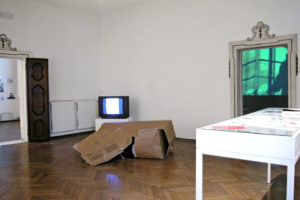
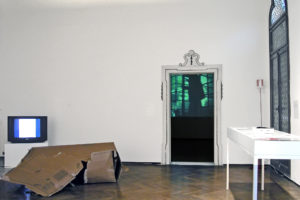
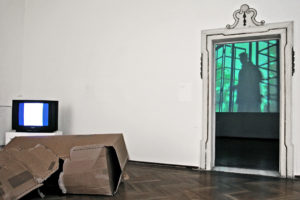
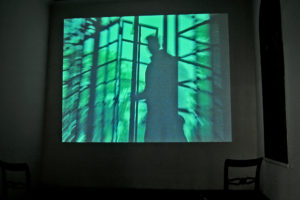
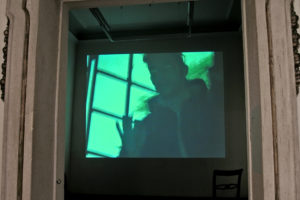
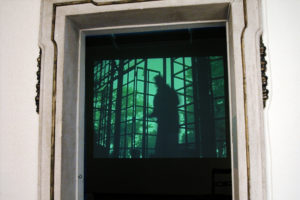
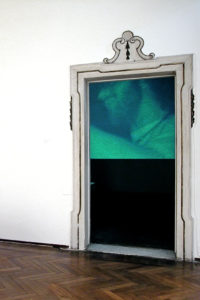
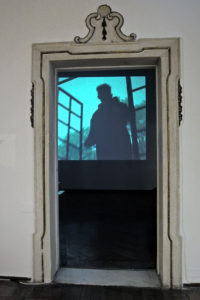
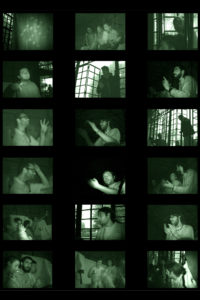
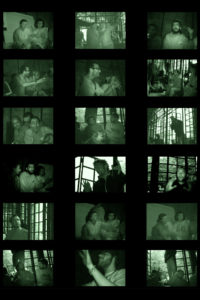
 Dis-Orders
Dis-Orders